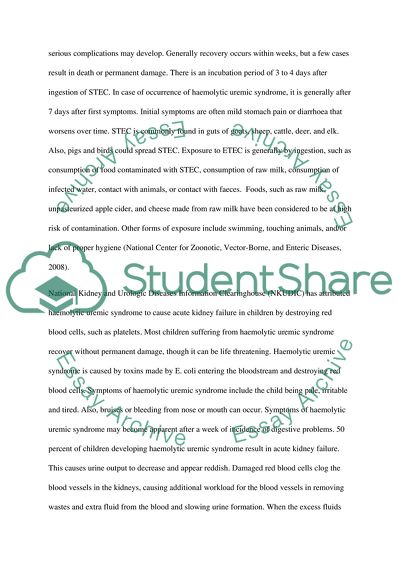Cite this document
(The Effect of Escherichia Coli on Human Coursework, n.d.)
The Effect of Escherichia Coli on Human Coursework. Retrieved from https://studentshare.org/health-sciences-medicine/1722005-escherichia-coli-ecoli-o157-has-been-isolated-in-two-patients-in-the-care-of-the-elderly-ward-and-a-staff-member-has-reported-absent-with-gastro-intestinal-symptom-you-are-also-aware-of-a-child-recently-admitted-for-investigation-of-bloody-diarrhoea
The Effect of Escherichia Coli on Human Coursework. Retrieved from https://studentshare.org/health-sciences-medicine/1722005-escherichia-coli-ecoli-o157-has-been-isolated-in-two-patients-in-the-care-of-the-elderly-ward-and-a-staff-member-has-reported-absent-with-gastro-intestinal-symptom-you-are-also-aware-of-a-child-recently-admitted-for-investigation-of-bloody-diarrhoea
(The Effect of Escherichia Coli on Human Coursework)
The Effect of Escherichia Coli on Human Coursework. https://studentshare.org/health-sciences-medicine/1722005-escherichia-coli-ecoli-o157-has-been-isolated-in-two-patients-in-the-care-of-the-elderly-ward-and-a-staff-member-has-reported-absent-with-gastro-intestinal-symptom-you-are-also-aware-of-a-child-recently-admitted-for-investigation-of-bloody-diarrhoea.
The Effect of Escherichia Coli on Human Coursework. https://studentshare.org/health-sciences-medicine/1722005-escherichia-coli-ecoli-o157-has-been-isolated-in-two-patients-in-the-care-of-the-elderly-ward-and-a-staff-member-has-reported-absent-with-gastro-intestinal-symptom-you-are-also-aware-of-a-child-recently-admitted-for-investigation-of-bloody-diarrhoea.
“The Effect of Escherichia Coli on Human Coursework”, n.d. https://studentshare.org/health-sciences-medicine/1722005-escherichia-coli-ecoli-o157-has-been-isolated-in-two-patients-in-the-care-of-the-elderly-ward-and-a-staff-member-has-reported-absent-with-gastro-intestinal-symptom-you-are-also-aware-of-a-child-recently-admitted-for-investigation-of-bloody-diarrhoea.


